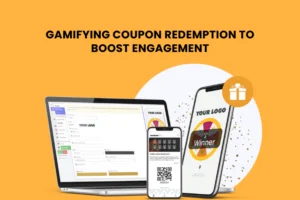
Digital Loyalty Programs: Transforming Customer Engagement in the USA
- Personalized Customer Experiences
- Seamless Integration with Mobile Technology
- Enhanced Customer Engagement through Gamification
- Data-Driven Decision Making
- Increased Customer Retention
- Cross-Channel Consistency
- Enhanced Customer Insights
- Social Media Integration
- Flexibility and Variety in Rewards
- Sustainability and Environmental Impact
In today’s digital age, businesses are continually seeking innovative ways to engage and retain customers. One of the most effective strategies that has emerged is the implementation of digital loyalty programs. These programs not only reward customers for their loyalty but also provide businesses with valuable insights into customer behavior. Here’s a look at how digital loyalty programs are transforming customer engagement in the USA.
1. Personalized Customer Experiences
Digital loyalty programs enable businesses to gather detailed data on customer preferences and behaviors. This information can be used to create personalized marketing campaigns, tailored product recommendations, and customized rewards. By providing a personalized experience, businesses can significantly enhance customer satisfaction and loyalty. For example, Starbucks uses its mobile app to offer personalized rewards based on a customer’s purchase history, leading to increased customer engagement and repeat purchases.
2.Seamless Integration with Mobile Technology
The widespread use of smartphones has made mobile apps an integral part of digital loyalty programs. Customers can easily access their rewards, check their points balance, and receive notifications about exclusive offers directly on their mobile devices. This convenience encourages customers to engage more frequently with the brand. Companies like Dunkin’ Donuts have successfully integrated their loyalty programs with mobile apps, allowing customers to earn points with every purchase and redeem them seamlessly via their smartphones.
3. Enhanced Customer Engagement through Gamification
Gamification involves incorporating game-like elements into non-game contexts to boost engagement. Digital loyalty programs often use gamification techniques to make earning and redeeming rewards more fun and engaging for customers. For instance, Nike’s loyalty program, NikePlus, includes challenges and competitions that customers can participate in to earn points and unlock exclusive rewards. This not only keeps customers engaged but also fosters a sense of community among brand loyalists.
4.Data-Driven Decision Making
Digital loyalty programs provide businesses with a wealth of data on customer behavior and preferences. By analyzing this data, companies can make informed decisions about product offerings, marketing strategies, and customer service improvements. For example, retailers like Walmart use data from their loyalty programs to optimize inventory management, ensuring that popular products are always in stock and reducing the likelihood of overstocking less popular items.
5.Increased Customer Retention
One of the primary goals of digital loyalty programs is to increase customer retention. By rewarding customers for their repeat business, companies can foster long-term loyalty and reduce customer churn. Studies have shown that acquiring a new customer can be five times more expensive than retaining an existing one, making loyalty programs a cost-effective strategy for maintaining a stable customer base. Sephora’s Beauty Insider program is a prime example of a successful loyalty initiative that keeps customers coming back by offering tiered rewards and exclusive benefits.
6. Cross-Channel Consistency
Digital loyalty programs enable businesses to offer a consistent customer experience across various channels, including online, in-store, and mobile. This cross-channel consistency ensures that customers can earn and redeem rewards regardless of how they choose to shop. For instance, Target’s Circle loyalty program allows customers to earn rewards whether they shop in-store, online, or through the Target app, providing a seamless and cohesive shopping experience.
7. Enhanced Customer Insights
The data collected through digital loyalty programs can provide deep insights into customer preferences and buying patterns. Businesses can use this information to tailor their marketing strategies and product offerings to better meet the needs of their customers. Amazon Prime, for example, uses data from its loyalty program to recommend products, personalize the shopping experience, and offer targeted promotions, resulting in increased customer satisfaction and sales.
8. Social Media Integration
Many digital loyalty programs integrate with social media platforms to further engage customers and encourage word-of-mouth marketing. Customers can share their rewards and achievements on social media, promoting the brand to their followers and driving organic growth. Companies like Chipotle have leveraged social media integration in their loyalty programs to create buzz and attract new customers through user-generated content and social sharing.
9. Flexibility and Variety in Rewards
Digital loyalty programs offer flexibility and variety in the types of rewards customers can earn. From discounts and freebies to exclusive access to events and early product releases, businesses can offer a range of incentives that appeal to different customer segments. This flexibility ensures that customers remain engaged and motivated to participate in the loyalty program. For instance, Marriott Bonvoy allows members to redeem points for hotel stays, flights, and even experiences like concerts and sporting events.
10. Sustainability and Environmental Impact
Digital loyalty programs can also contribute to a company’s sustainability efforts. By reducing the need for physical loyalty cards and paper coupons, businesses can minimize their environmental footprint. Additionally, some loyalty programs offer eco-friendly rewards, such as donations to environmental causes or discounts on sustainable products. Patagonia’s Common Threads Initiative is an example of a loyalty program that encourages customers to recycle and reuse their products, promoting sustainability and responsible consumption.
Conclusion
Digital loyalty programs are revolutionizing customer engagement in the USA by providing personalized experiences, seamless integration with mobile technology, and valuable customer insights. As businesses continue to innovate and adapt to changing consumer preferences, digital loyalty programs will play a crucial role in building long-term customer relationships and driving business growth. By leveraging the power of digital technology, companies can create loyalty programs that not only reward customers but also foster a deeper connection between the brand and its customers.




